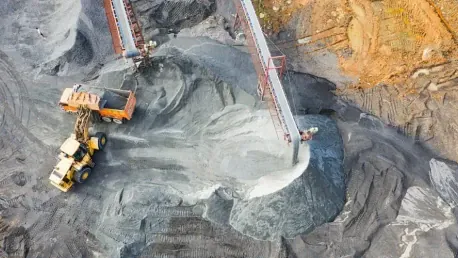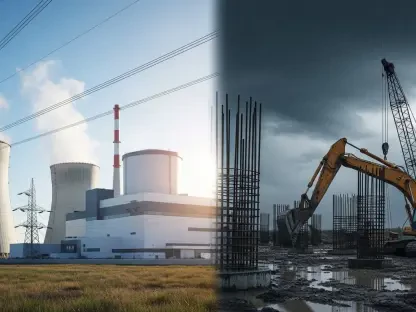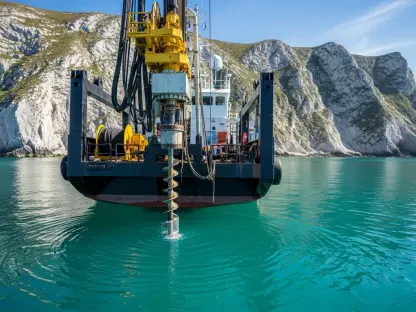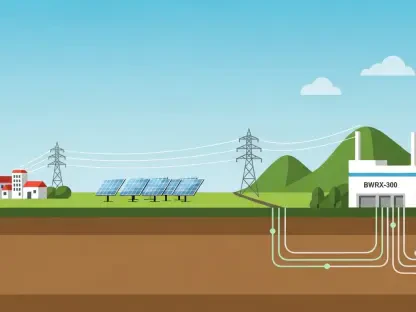In a move that has generated significant debate, Alberta has lifted its coal ban, prompting both environmental and political controversy. Critics argue that this decision could have severe environmental repercussions, while supporters claim it could boost the local economy and employment.
The recent decision by Alberta’s Energy Minister Brian Jean to lift the ban on coal exploration on the Eastern Slopes of the Rocky Mountains has ignited a firestorm of environmental and political controversy. This move has not only reversed a longstanding policy but also brought to the forefront the ongoing debate between economic development and environmental preservation.
Historical Context of Coal Policy in Alberta
The Lougheed Government’s 1976 Coal Policy
In 1976, the Lougheed Government implemented a coal policy that protected the Eastern Slopes of the Rocky Mountains from coal mining activities. This policy emerged as a response to growing environmental concerns and was aimed at preserving the region’s natural beauty and ecological integrity. The restrictive measures under Lougheed’s policy were applauded by environmentalists and stood as a testament to Alberta’s commitment to safeguarding its unique landscapes. These protected areas became a sanctuary for diverse wildlife and a vital source of fresh water, serving as a hallmark of balanced resource management.
However, the stance on coal mining remained a contentious issue. The tension between economic exploitation and environmental preservation persisted as industries and communities debated the merits of resource extraction in such a sensitive area. This historical backdrop set the stage for future political and environmental battles, showcasing Alberta’s struggle to balance industrial growth with conservation efforts. The longstanding protection afforded by Lougheed’s policy became a significant reference point in the subsequent discourse on coal and environmental matters.
Rescindment by Jason Kenney’s Government
In May 2020, Jason Kenney’s government made a controversial move by rescinding the 1976 coal policy, opening the door for coal exploration in the Eastern Slopes. This decision was met with immediate public backlash, particularly from rural and agricultural communities typically perceived as supportive of the United Conservative Party (UCP). Critics argued that the rescindment represented a stark departure from Alberta’s historical commitment to environmental protection, sparking fears of irreversible ecological damage. The decision invoked strong emotions and widespread condemnation, with opponents citing potential threats to water sources, wildlife habitats, and the overall integrity of the Eastern Slopes.
Amid the public uproar, various environmental groups and community leaders mobilized to resist the government’s decision, initiating petitions and grassroots campaigns to restore the protections. The loud and persistent objections underscored the deep-rooted value Albertans placed on their natural landscapes and raised questions about the government’s priorities and decision-making processes. This period of turbulence highlighted the profound disconnect between the government’s economic ambitions and public sentiment, foreshadowing the conflicts that would come with future policy shifts.
Reinstatement of the Ban
Following the overwhelming public outcry, Energy Minister Sonya Savage took steps to mitigate the political fallout by reinstating the coal exploration ban in February 2021. This reversal was seen as a concession to public opinion and environmental concerns, temporarily halting coal exploration activities in the region. The reinstatement was hailed as a victory for environmental advocates and rural communities who had vocally opposed the rescindment. Minister Savage’s decision was perceived as an attempt to restore public trust and demonstrate the government’s responsiveness to citizen concerns.
The reinstatement, however, did not quell the underlying tensions; rather, it highlighted the volatile nature of coal policy in Alberta. The flip-flopping on such a critical issue revealed the complexities and pressures faced by policymakers, navigating between environmental stewardship and economic interests. While the ban brought temporary relief to environmentalists and residents, it left open the possibility of future policy reversals, keeping the coal debate alive. This episode reinforced the narrative of uncertainty and contention that surrounded Alberta’s approach to coal and environmental regulation.
Recent Developments
The technology sector is seeing rapid advancements, with numerous innovations emerging in artificial intelligence, biotechnology, and renewable energy. Companies are pushing the boundaries of what is possible, striving to enhance efficiency and sustainability. Meanwhile, governments worldwide are enacting new regulations to keep pace with these changes and ensure that technological growth aligns with public interest and safety.
Brian Jean’s Decision to Lift the Ban
In an effort to restore normalcy and address concerns, Brian Jean made the decision to lift the ban that had previously been put in place. This move signals a shift in policy and reflects a response to the various feedback and circumstances surrounding the original decision.
On January 15, 2021, Brian Jean, the new Environment Minister, reversed the course once again by lifting the ban on coal exploration through a letter to the Chairman of the Alberta Energy Regulator. This decision appears to be an attempt to appease the coal-mining industry and address legal pressures from previous policy reversals. Jean’s maneuver represents a significant shift in government stance, favoring economic pursuits over mounting environmental and public health concerns. The move sparked immediate controversy, with critics arguing that it undermined previous commitments to environmental protection and was driven by industrial interests rather than public welfare.
This latest decision reignited the conflict between economic development and environmental stewardship, showcasing the ongoing struggle to balance these competing priorities. By bypassing extensive public consultation, the government’s actions were seen as neglecting the voices of concerned citizens and experts who had vehemently opposed coal mining in this fragile region. The letter effectively opened up the Eastern Slopes to coal exploration, putting at risk the landscapes and ecosystems that had been fiercely protected for decades, and reigniting fears of long-term environmental degradation.
Legal and Industrial Pressures
The government’s decision to lift the ban is influenced by legal challenges and the interests of the coal-mining industry. The move is seen as a way to avoid potential lawsuits and secure political leverage, despite the environmental and public health concerns. The legal pressures stem from previous policy reversals, with the coal industry seeing opportunities to challenge the government’s decision-making on grounds of economic and procedural fairness. Industry stakeholders argued that the back-and-forth nature of the policy endangered investment and economic stability, pushing for a definitive stance that would secure their operations.
Jean’s decision can be interpreted as a strategic response to these pressures, aiming to present a unified front that supports industrial growth and legal clarity. However, this approach has been met with skepticism and resistance from environmental groups and the wider public, who view it as a capitulation to corporate interests at the expense of Alberta’s natural heritage. The government’s shift highlights the complex interplay between legal constraints, economic ambitions, and environmental stewardship, underscoring the high stakes involved in coal policy decisions.
Public and Expert Reactions
Environmentalists’ Objections
Environmentalists and conservationists have voiced strong objections to the decision, with Kevin Van Tighem, a notable environmentalist, describing the move as “a declaration of war on our province, our children, and our future,” emphasizing the potential long-term environmental degradation. Van Tighem’s remarks encapsulate the deep sense of betrayal and alarm among environmental advocates who had long fought to safeguard the Eastern Slopes. His sentiments were echoed by numerous conservation groups and community activists, all of whom warned of the irreversible damage coal exploration could inflict on the region’s ecosystems.
The objections raised by environmentalists center on concerns about water quality, biodiversity loss, and the destruction of pristine landscapes. They argue that coal mining poses an unacceptable risk to critical watersheds that provide drinking water for millions of residents and support agricultural activities. The potential for toxic by-products, such as selenium, to contaminate water sources has been a particular point of contention, with experts warning of severe ecological and public health repercussions. This vocal opposition has galvanized public sentiment, fostering a sense of solidarity among those committed to preserving Alberta’s environmental legacy.
Social Media and Public Outcry
Groups like Save the Mountains Alberta have taken to social media to express their concerns about the destruction of native grasslands, wildlife habitats, and potential water contamination from coal mining activities. The public outcry reflects widespread opposition to the policy shift. Through platforms like Twitter and Facebook, these groups have mobilized a broad base of supporters, disseminating information and rallying against the government’s decision. Social media campaigns have succeeded in bringing attention to the issue, creating a groundswell of resistance and advocacy.
The momentum garnered by these online movements underscores the potent role of social media in modern environmental activism. By leveraging digital tools, advocates have managed to amplify their message, engage with diverse audiences, and hold policymakers accountable. The public’s robust engagement through social media has reinforced the narrative that coal exploration on the Eastern Slopes is not just a political or economic matter, but a community-driven concern that touches upon the values and priorities of Albertans as stewards of their natural environment.
Potential Environmental Impacts
Ecological Risks
The ecological risks associated with human activities are becoming increasingly evident as ecosystems around the world are facing unprecedented challenges. These risks range from habitat destruction and pollution to climate change and biodiversity loss, each contributing to the degradation of natural environments. Addressing these risks requires comprehensive strategies that balance economic development with environmental preservation to ensure the sustainability of our planet for future generations.
Experts such as Nigel Bankes from the University of Calgary and Lorne Fitch, a professional biologist, have highlighted the ecological risks associated with coal mining. These include the impairment of watersheds, selenium contamination, destruction of protected species habitats, and landscape degradation. Bankes and Fitch’s assessments underscore the profound and multifaceted risks that coal mining poses to the environment, drawing attention to the delicate balance of ecosystems within the Eastern Slopes. They warn that the alteration of landscapes could disrupt natural water flows, leading to the degradation of rivers, streams, and wetlands that are crucial for wildlife and human activities.
The potential for selenium contamination, a by-product of coal mining known for its toxicity to aquatic life, has been a primary concern. Elevated selenium levels in water bodies can cause significant harm to fish populations and other aquatic organisms, disrupting entire food chains and the ecological equilibrium of affected areas. Moreover, the destruction of habitats for threatened species, including those protected under federal and provincial laws, adds another layer of complexity and urgency to the opposition against coal mining. Expert opinions reinforce the narrative that the environmental costs of coal exploration outweigh the perceived economic benefits, calling for a more sustainable approach to resource management.
Long-Term Consequences
The potential long-term consequences of coal mining in the Eastern Slopes are significant, posing severe threats to Alberta’s natural resources and public health. These risks counteract public opinion and scientific rationale. The disturbance of natural habitats, the introduction of pollutants, and the alteration of landscapes could lead to irreversible changes that would detrimentally affect future generations. The watersheds originating from the Eastern Slopes are vital not only for their ecological functions but also for providing clean water to downstream communities, agricultural lands, and urban centers. The degradation of these sources could have far-reaching impacts, exacerbating water scarcity issues and compromising the health and livelihoods of countless Albertans.
Additionally, the cumulative environmental impacts of coal mining are likely to contribute to broader ecological crises, including biodiversity loss and climate change. The deforestation and land use changes associated with mining operations release carbon stored in vegetation and soil, further contributing to global greenhouse gas emissions. These long-term consequences present a stark warning that short-term economic gains from coal exploration come at a very high price. The intergenerational effects highlight the necessity for prudent and forward-thinking policies that prioritize environmental sustainability as a cornerstone of Alberta’s development strategy.
Political Dynamics and Maneuverings
Strategic Timing of the Announcement
The timing of the announcement, concurrent with significant global events, suggests strategic political maneuvering. The issue appears to be less about environmental concerns and more about avoiding legal ramifications and securing political support from the coal-mining industry. By choosing to unveil such a pivotal policy shift during a period of heightened global distractions, the government ostensibly aimed to minimize immediate backlash and mitigate the public’s focus on the decision. Critics argue that this tactic reflects a disregard for transparency and an intent to sidestep substantial public debate and scrutiny.
This perception of strategic timing underscores the inherent political calculations behind the decision-making process, suggesting that the government weighed the risks of public uproar against the potential benefits of industrial backing. The alignment of the announcement with broader political contexts also points to an attempt to navigate around environmental regulations and legal obstacles by leveraging moments of reduced public attention. Such maneuvering feeds into the narrative that coal policy in Alberta is driven by opportunism and expediency rather than a principled commitment to sustainable development and environmental protection.
Government Narrative and Transparency
The government’s narrative has been criticized for lacking transparency and dismissing public opinion. Critics argue that the decision prioritizes industry interests over environmental protection, reflecting a broader trend in governmental decision-making. The lack of clear communication and comprehensive consultation in the lead-up to the ban’s removal has been a focal point of contention, with stakeholders decrying the opaqueness of the process. This perceived disregard for public input has fueled mistrust and frustration among communities who feel their concerns are not being genuinely addressed.
The government’s portrayal of the coal exploration policy as a necessary economic initiative contrasts sharply with the environmental and public health narratives put forth by critics. This divergence has amplified calls for more accountable and inclusive governance that transparently weighs the benefits and drawbacks of resource extraction. By sidelining public discourse, the government risks alienating constituents and undermining broader efforts to foster collaborative and sustainable development models. The criticism directed at the government’s narrative and transparency issues reflects a deeper discontent with how policy decisions are communicated and executed, emphasizing the need for greater openness and responsiveness to public and expert concerns.
Comparison with Broader Political Actions
In its deliberate approach to addressing the complexities of cryptocurrencies, the SEC opted for another delay in its verdict on the spot Ethereum ETF. The extension grants the SEC an opportunity not only to conduct an in-depth examination of Ethereum’s suitability for ETF status but also to source public insight, which could heavily sway the conclusion. This speaks to the SEC’s attentiveness to the nuances of digital assets and their integration into regulatory frameworks, which it does not take lightly. The situation closely parallels the stalling faced by Grayscale, who is also waiting for the green light to transform its Ethereum Trust into a spot ETF, raising questions about the contrasting regulatory processes for Bitcoin and Ethereum. Councils debating contentious issues often invoke similar postponements, much like the SEC’s cautious stance on digital asset regulation.
Domestic Policy Decisions
The coal policy issue is compared with Premier Danielle Smith’s diplomatic blunders related to U.S. President Donald Trump’s trade tariffs. This comparison highlights a pattern of political missteps and inadequately thought-out decisions aimed at placating powerful industries. Smith’s handling of tariff negotiations with the Trump administration mirrored the coal debacle in its hasty and reactionary approach, prioritizing immediate economic gains over long-term strategic planning and sustainability. These parallels illustrate a recurrent theme of short-sighted policy-making that often leads to controversies and public dissatisfaction.
The juxtaposition also underscores the broader political ethos within Alberta’s leadership, where industrialist agendas appear to frequently override environmental and public health considerations. Both the coal policy and the tariff mishaps reveal a propensity to make concessions to powerful sectors without fully accounting for the broader socio-economic and environmental impacts. This pattern has contributed to a perceived erosion of thoughtful and principled governance, inviting criticism from a cross-section of the public and policy experts who advocate for a more balanced and sustainable approach to development.
International Trade Relations
Alberta’s handling of international trade relations, particularly with the U.S., mirrors its domestic policy decisions. The government’s approach reflects a consistent prioritization of economic objectives over environmental and public health concerns. The alignment of domestic coal policy with broader trade strategies exemplifies a cohesive, albeit contentious, economic agenda that favors industrial growth and immediate economic returns. This alignment suggests that Alberta’s leadership is willing to navigate complex international landscapes with the same expediency and industrial favoritism exhibited in domestic policy matters.
The implications of such an approach are multifaceted, impacting Alberta’s reputation on the global stage as well as its internal socio-political dynamics. Critics have argued that this prioritization leads to strained relationships both with trading partners and among Alberta’s own population, fostering divisions and undermining cohesive policy frameworks. By taking stances that appear to disregard environmental stewardship and public welfare, Alberta risks long-lasting repercussions both in terms of ecological degradation and public trust. The international dimension of these policies further complicates the province’s ability to present itself as a responsible and forward-thinking leader in economic and environmental affairs.
Overarching Trends and Consensus Viewpoints
Economic Pursuits vs. Environmental Responsibilities In the ongoing debate between economic development and environmental protection, it is essential to strike a balance that promotes sustainability without hindering growth.
The key trend observed in Alberta’s recent policy decisions is a clear tilt towards industrial interests at the cost of environmental and public health. There is a palpable disconnect between the government’s economic motivations and the mounting public and expert consensus on the necessity of preserving natural landscapes and resources. This inclination towards prioritizing economic development has sparked significant controversy, reflecting broader debates on the balance between growth and sustainability. Despite the economic rationale, the emphasis on exploiting natural resources has been criticized for its short-term focus and potential long-term harms.
Public sentiment, galvanized by expert opinions, increasingly demands that the government adopt more sustainable and environmentally conscious policies. The growing awareness and advocacy around environmental issues underscore a shift in societal values towards greater appreciation and protection of natural resources. The government’s current trajectory, however, appears misaligned with these emerging priorities, prompting calls for more integrative and responsible policy-making that accounts for both economic viability and environmental integrity. This divergence highlights the urgent need for Alberta’s leadership to reconcile economic pursuits with environmental stewardship to ensure long-term prosperity and ecological health.
Broader Implications for Alberta’s Socio-Political Landscape
Alberta’s Energy Minister Brian Jean’s recent decision to lift the ban on coal exploration in the Eastern Slopes of the Rocky Mountains has sparked a significant environmental and political controversy. This move, which marks a reversal of a longstanding policy, highlights the ongoing clash between the goals of economic development and the imperative of environmental preservation. Critics argue that the decision poses a threat to the region’s delicate ecosystems, water sources, and wildlife, potentially leading to long-term ecological damage. On the other hand, supporters believe that coal exploration could bring much-needed economic benefits, such as job creation and increased revenue for the province. This debate underscores a broader struggle faced by many regions: balancing economic growth with the need to protect natural landscapes. Alberta’s choice has broader implications, reflecting the challenges and complexities of managing resources in a way that benefits both the economy and the environment.









